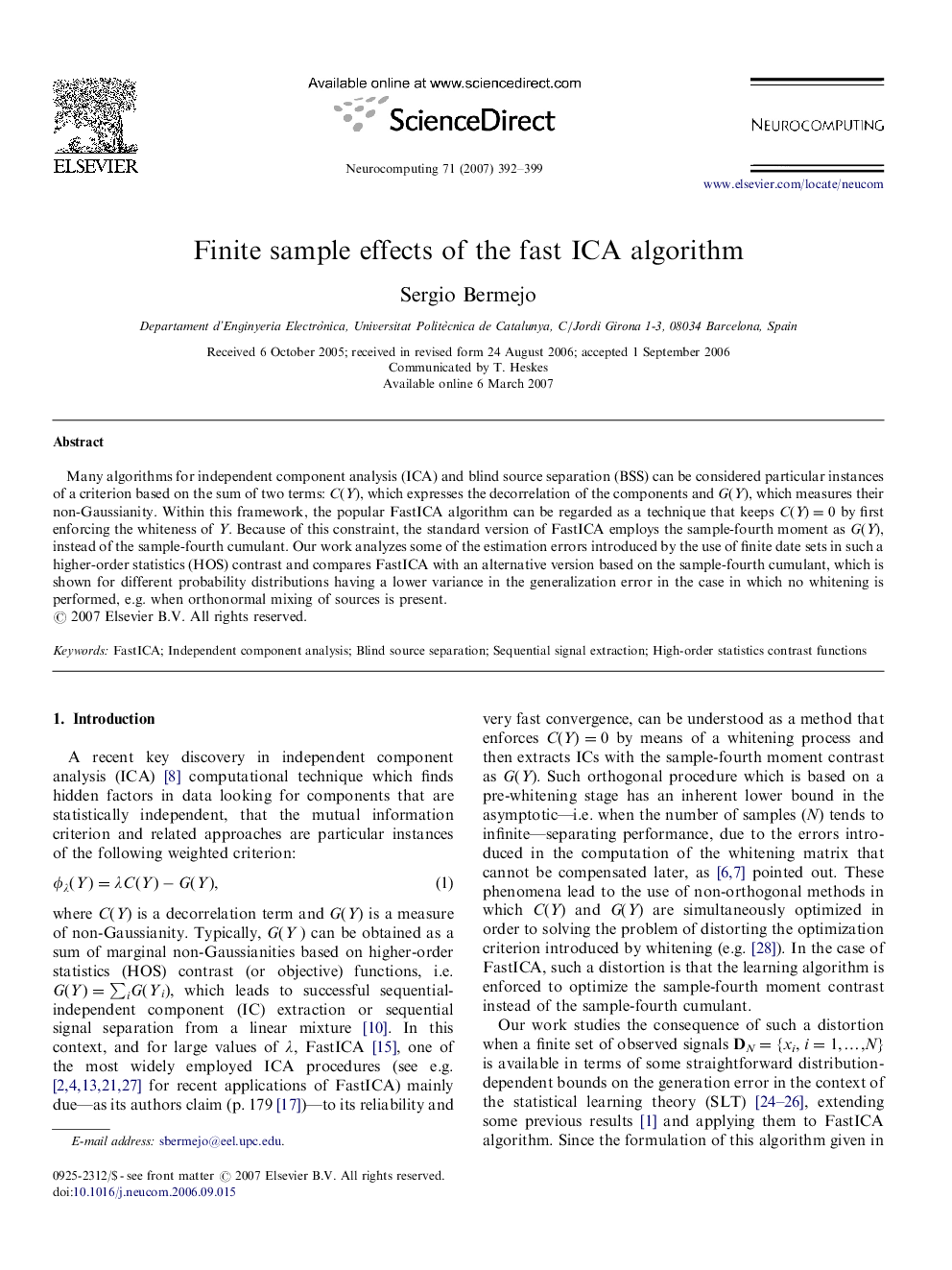| Article ID | Journal | Published Year | Pages | File Type |
|---|---|---|---|---|
| 410836 | Neurocomputing | 2007 | 8 Pages |
Many algorithms for independent component analysis (ICA) and blind source separation (BSS) can be considered particular instances of a criterion based on the sum of two terms: C(Y), which expresses the decorrelation of the components and G(Y), which measures their non-Gaussianity. Within this framework, the popular FastICA algorithm can be regarded as a technique that keeps C(Y)=0 by first enforcing the whiteness of Y. Because of this constraint, the standard version of FastICA employs the sample-fourth moment as G(Y), instead of the sample-fourth cumulant. Our work analyzes some of the estimation errors introduced by the use of finite date sets in such a higher-order statistics (HOS) contrast and compares FastICA with an alternative version based on the sample-fourth cumulant, which is shown for different probability distributions having a lower variance in the generalization error in the case in which no whitening is performed, e.g. when orthonormal mixing of sources is present.
